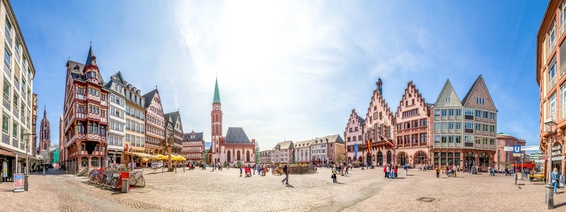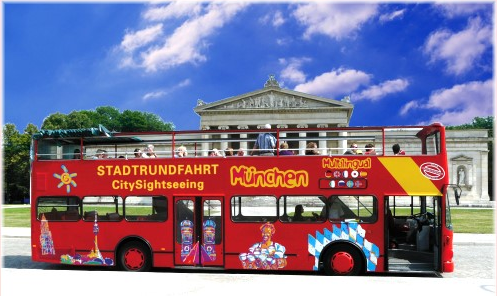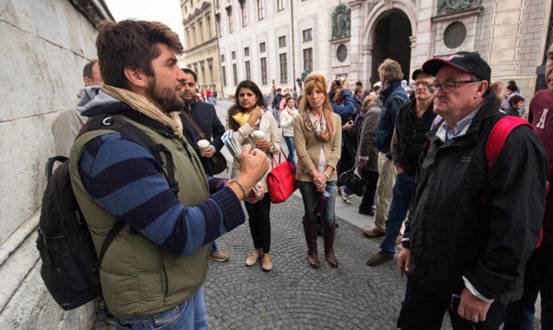A Comprehensive Walking Tour of Berlin's Historic Heart

A Comprehensive Walking Tour of Berlin's Historic Heart
This guide details a classic and immersive walking tour through the very core of Berlin, Germany. The route is designed to take you on a journey from the post-war modernity of Alexanderplatz, through the historic seat of power, along the grand boulevards of Prussian kings, past the magnificent domes of the city's cathedral, and into the luxury of a shopping street that witnessed the fall of a wall. It is a walk through layers of time, where medieval foundations, imperial ambitions, Nazi atrocities, Cold War divisions, and contemporary vibrancy collide. The itinerary is structured as a logical, one-way exploration, but can easily be adapted to suit your pace and interests.
Starting Point: The Meeting Place - Alexanderplatz
Your journey begins at
Alexanderplatz, a vast, open square that serves as one of Berlin's primary transportation hubs and a symbolic center of the former East Berlin. The name itself is a relic of a royal visit from Russian Tsar Alexander I in 1805, but the square's current character is overwhelmingly a product of the German Democratic Republic (GDR) in the 1960s. Arriving here, you are immediately immersed in the scale and aesthetic of socialist urban planning.The most dominant feature is the
Fernsehturm (Berlin TV Tower). Soaring to 368 meters, it is the tallest structure in Germany. Its silver sphere, containing an observation deck and a revolving restaurant, was intended as a potent symbol of GDR technological prowess and is affectionately (or ironically) nicknamed "Der Telespargel" (The Television Asparagus) by locals. On a clear day, the view from the top is unparalleled, offering a panoramic orientation of the entire city. Nearby stands the Weltzeituhr (World Time Clock), a popular meeting point since its installation in 1969. This rotating steel sculpture displays the time in major cities around the world and is a constant hive of activity. The adjacent Rotes Rathaus (Red City Hall), which we will visit next, can be seen from the square, its distinctive architecture providing a visual link to the next stage of the tour. Food & Drink Tip: For an authentic taste of East German nostalgia, skip the generic food courts and seek out a stall selling Currywurst. This iconic Berlin dish of steamed, then fried pork sausage topped with a curried ketchup sauce is a local staple. Alternatively, for a sit-down experience with a view, consider booking a slot at the TV Tower's restaurant, though reservations are essential. Transportation & Practicalities: Alexanderplatz is served by S-Bahn lines (S3, S5, S7, S9), U-Bahn lines (U2, U5, U8), trams, and numerous buses. It is almost impossible to miss. The square is large and often crowded; be mindful of your belongings. Public restrooms are available for a small fee in the Alexa shopping mall or at the main train station area.First Stop: The Seat of Power - Rotes Rathaus (Red City Hall)
A short two-minute walk south from Alexanderplatz brings you to the
Rotes Rathaus. Despite its name ("Red City Hall"), the color refers not to politics but to its distinctive clinker brick façade. Completed in 1869, this Renaissance Revival building is the official seat of the Governing Mayor of Berlin and the city government. Its architecture is grand and imposing, featuring a 74-meter-high tower that you can often see flying the Berlin bear flag.The Rathaus has a complex history. Severely damaged in World War II, it was rebuilt by the East German authorities while the city was divided. During the Cold War, West Berlin's government operated from a town hall in Schöneberg. It was only after reunification in 1991 that the city's administration was once again unified under this historic roof. While the interior is primarily administrative, the arcaded courtyard is usually accessible to the public and hosts various events and exhibitions throughout the year.
Directly in front of the Rathaus is the
Neptunbrunnen (Neptune Fountain), a magnificent 19th-century fountain depicting the Roman god of the sea surrounded by four female figures representing the Rhine, Vistula, Oder, and Elbe rivers. It’s a beautiful spot to pause and admire the intricate sculptures. Cultural Insight: The juxtaposition of the medieval-inspired Rathaus with the ultra-modern TV Tower looming behind it is a quintessential Berlin experience. It perfectly illustrates the city's philosophy of never erasing its past but instead building upon it, creating a dynamic and sometimes jarring dialogue between different eras.Second Stop: The Grand Boulevard - Unter den Linden
From the Rotes Rathaus, walk west, passing the fountain and soon arriving at the beginning of Berlin's most famous boulevard,
Unter den Linden ("Under the Linden Trees"). This east-west artery was originally a riding path for the Prussian royal family to reach their hunting grounds in Tiergarten. It was transformed in the 17th century into a grand, tree-lined avenue befitting an imperial capital.As you begin your stroll, you are walking in the footsteps of kings, kaisers, and revolutionaries. The boulevard is flanked by an impressive collection of historic buildings and institutions.
Third Stop: The Divine Dome - Berliner Dom (Berlin Cathedral)
At the midpoint of your walk along Unter den Linden, you will be drawn to the magnificent sight of the
Berliner Dom on your left. This is not a cathedral in the strict ecclesiastical sense (as it has never been the seat of a bishop), but rather the grand Protestant church of the Hohenzollern dynasty. Its current appearance dates from 1905, a lavish creation of Kaiser Wilhelm II intended to rival St. Peter's in Rome.The cathedral is an overwhelming spectacle of Renaissance and Baroque styles. The massive dome, topped with a lantern cross, dominates the skyline. Purchasing a ticket to go inside is highly recommended.
Fourth Stop: Luxury and History - Friedrichstraße
Continuing west on Unter den Linden, you will eventually reach its intersection with
Friedrichstraße. This north-south artery is one of Berlin's premier shopping streets, but its character changes dramatically as you walk it.Turn south onto Friedrichstraße. Almost immediately, you'll encounter luxury boutiques like Gucci and Louis Vuitton. However, its most famous landmark is
Galeries Lafayette. The Berlin outpost of the famous Parisian department store is an architectural marvel in itself, featuring a stunning conical glass vortex at its center that draws the eye upwards through three floors of gourmet food, fashion, and accessories. Even if you're not shopping, it's worth stepping inside to see the design.Friedrichstraße's history is as rich as its present. During the Cold War, this was where one of the most famous border crossings between East and West Berlin was located:
Checkpoint Charlie. It is about a 10-15 minute walk south from Galeries Lafayette. While today it is a heavily commercialized tourist spot with actors in period uniforms (for photo ops for a fee), its historical significance is profound. It was the scene of a tense standoff between American and Soviet tanks in 1961 and was used primarily by Allied personnel and foreigners. The nearby Mauermuseum – Museum Haus am Checkpoint Charlie documents the history of the Berlin Wall and the dramatic escape attempts made by East Germans. Shopping & Food Tip: Friedrichstraße offers everything from high-end luxury to more accessible brands. For a unique culinary experience, visit the food hall in the basement of Galeries Lafayette for high-quality delicacies. If you make it to Checkpoint Charlie, consider visiting a traditional German restaurant like Lutter & Wegner, which has been serving food and wine since 1811 and is credited with popularizing German sparkling wine (Sekt).The Return Journey
Your walking tour concludes on Friedrichstraße. You are now perfectly positioned to explore further or easily return to your starting point or hotel.
Overall Cultural Reflection and Practical Summary
This walking tour encapsulates Berlin's fragmented soul. You have traversed from a square built to showcase socialist achievement, past a city hall that governed only half a city, down a boulevard meant to project imperial power but later severed by a wall, to a cathedral that symbolizes both divine and temporal authority, and finally to a street that was once a deadly border and is now a temple of capitalism.
Key Practical Tips for Your Walk:Berlin does not present a single, unified narrative. It asks you to hold multiple truths at once: grandeur and trauma, division and unity, history and relentless modernity. This walk through its historic core is your first and most profound lesson in understanding this endlessly fascinating city.


